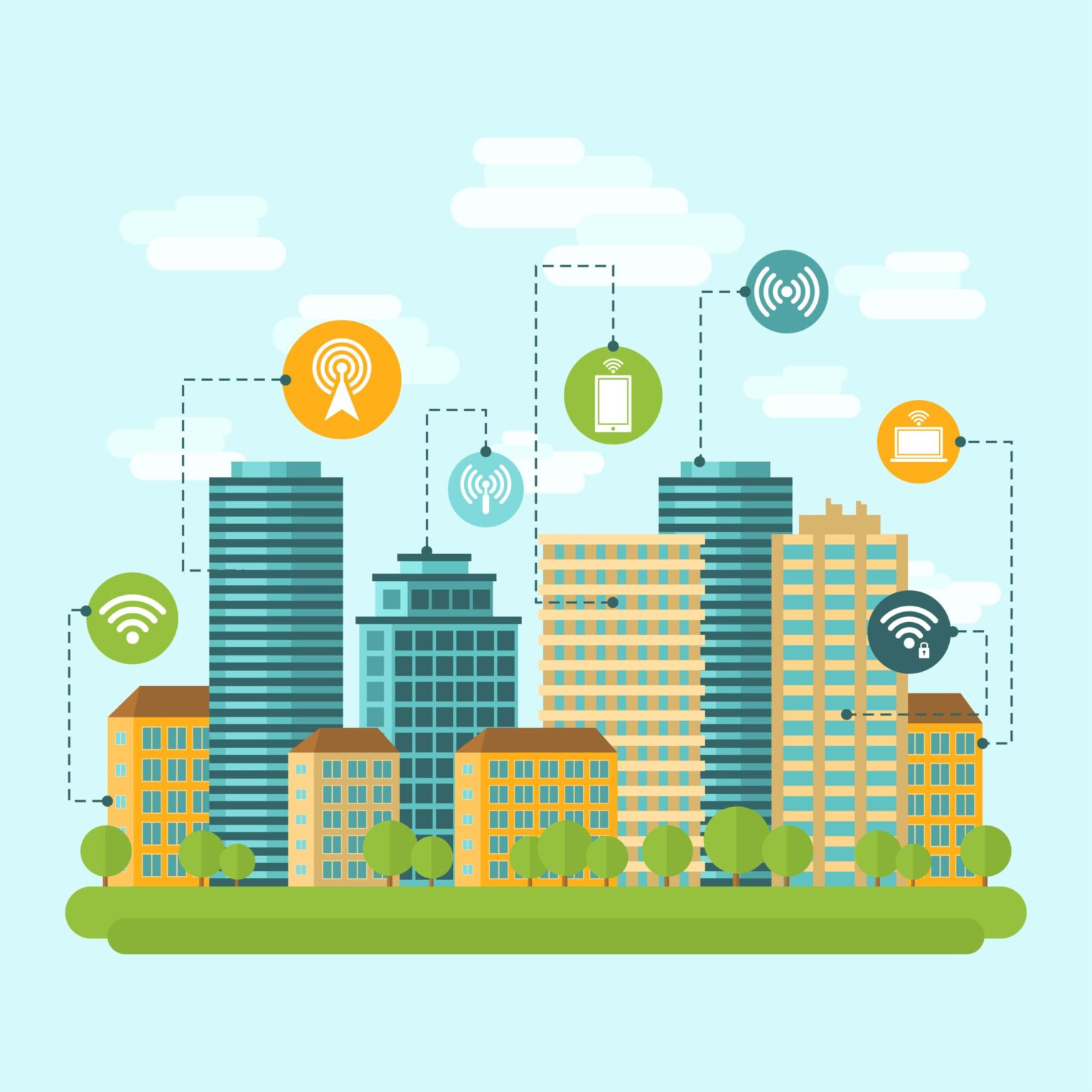Smart cities are urban areas that leverage technology and data to enhance the quality of life for residents, improve sustainability, and optimize resource management. These cities integrate various technologies, such as Internet of Things (IoT) devices, data analytics, and connectivity, to create a more efficient, connected, and sustainable urban environment. Here are some key aspects of smart cities:
- Infrastructure and Connectivity: Smart cities focus on developing robust digital infrastructure and connectivity. This includes high-speed broadband networks, wireless communication systems, and IoT sensors embedded in various urban assets like buildings, streetlights, transportation systems, and utilities. These interconnected systems enable the collection and analysis of real-time data to optimize operations and enhance service delivery.
- Sustainable Energy and Resource Management: Smart cities prioritize sustainable energy solutions and efficient resource management. They integrate renewable energy sources, such as solar panels and wind turbines, into the urban infrastructure. Advanced metering and monitoring systems track energy and water consumption, allowing for optimized usage and reduction of waste. Smart grids and energy management systems enable intelligent distribution and utilization of energy resources.
- Intelligent Transportation Systems: Smart cities implement intelligent transportation systems to optimize traffic flow, reduce congestion, and enhance public transportation. This includes smart traffic management systems, real-time data on parking availability, smart public transportation systems with real-time updates, and the integration of various transportation modes. These technologies improve mobility, reduce emissions, and enhance the overall transportation experience.
- Efficient Waste Management: Smart cities employ smart waste management systems to enhance efficiency and sustainability. This includes smart waste bins that monitor waste levels and optimize collection routes, sensor-based recycling systems, and waste-to-energy conversion technologies. By optimizing waste collection processes and promoting recycling, smart cities reduce waste generation and environmental impact.
- Data Analytics and Urban Planning: Smart cities leverage data analytics and predictive modeling to inform urban planning and decision-making. By analyzing data collected from various sources, such as sensors, social media, and citizen feedback, city planners can gain insights into urban trends, patterns, and needs. This data-driven approach enables evidence-based decision-making, efficient resource allocation, and improved urban design.
- Citizen Engagement and Participation: Smart cities aim to actively engage citizens in the decision-making process and foster a sense of community. This includes citizen participation platforms, mobile applications for reporting issues or providing feedback, and open data initiatives that make government data accessible to the public. By involving citizens in the planning and governance processes, smart cities promote transparency, accountability, and civic empowerment.
- Enhanced Public Services: Smart cities deploy technology to enhance public services and improve the quality of life for residents. This includes smart street lighting systems that adjust lighting levels based on real-time conditions, smart public safety systems for emergency response and surveillance, and digital platforms for accessing government services and information. These technologies make cities safer, more efficient, and more convenient for residents.
Implementing a smart city requires collaboration among various stakeholders, including government agencies, technology providers, private sector organizations, and citizens. It involves addressing challenges related to data privacy and security, interoperability of systems, and ensuring equitable access to technology and services. Smart city initiatives should also consider the social and cultural aspects of urban development, ensuring that technology is deployed in a way that benefits all residents and fosters inclusive growth.
Smart cities have the potential to transform urban living by optimizing resource usage, improving sustainability, and enhancing the overall quality of life. By harnessing the power of technology and data, these cities aim to create more livable, resilient, and environmentally-friendly urban environments.



